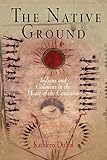The Native Ground : Indians and Colonists in the Heart of the Continent / Kathleen DuVal.
Material type: TextSeries: Early American StudiesPublisher: Philadelphia : University of Pennsylvania Press, [2011]Copyright date: ©2006Description: 1 online resource (336 p.) : 20 illusContent type:
TextSeries: Early American StudiesPublisher: Philadelphia : University of Pennsylvania Press, [2011]Copyright date: ©2006Description: 1 online resource (336 p.) : 20 illusContent type: - 9780812219395
- 9780812201826
- Colonists -- Arkansas River Valley -- History
- Colonists -- Arkansas River Valley -- History
- Indians of North America -- Arkansas River Valley -- History
- Indians of North America -- First contact with Europeans -- Arkansas River Valley
- Indians of North America -- First contact with Europeans
- Indians of North America -- First contact with Europeans -- Arkansas River Valley
- Indians of North America -- Arkansas River Valley -- History
- American Studies
- HISTORY / United States / Colonial Period (1600-1775)
- American History
- American Studies
- Native American Studies
- 976.7/300497
- online - DeGruyter
- Issued also in print.
| Item type | Current library | Call number | URL | Status | Notes | Barcode | |
|---|---|---|---|---|---|---|---|
 eBook
eBook
|
Biblioteca "Angelicum" Pont. Univ. S.Tommaso d'Aquino Nuvola online | online - DeGruyter (Browse shelf(Opens below)) | Online access | Not for loan (Accesso limitato) | Accesso per gli utenti autorizzati / Access for authorized users | (dgr)9780812201826 |
Frontmatter -- Contents -- Illustrations -- Introduction -- Chapter 1. A Bordered Land, to 1540 -- Chapter 2. Hosting Strangers, 1541-1650 -- Chapter 3. Negotiators of a New Land, 1650-1740 -- Chapter 4. An Empire in the West, 1700-1777 -- Chapter 5. New Alliances, 1765-1800 -- Chapter 6. Better at Making Peace Than War, 1790-1808 -- Chapter 7. A New Order, 1808-1822 -- Chapter 8. The End of the Native Ground? 1815-1828 -- Conclusion -- Abbreviations -- Notes -- Index -- Acknowledgments
restricted access online access with authorization star
http://purl.org/coar/access_right/c_16ec
In The Native Ground, Kathleen DuVal argues that it was Indians rather than European would-be colonizers who were more often able to determine the form and content of the relations between the two groups. Along the banks of the Arkansas and Mississippi rivers, far from Paris, Madrid, and London, European colonialism met neither accommodation nor resistance but incorporation. Rather than being colonized, Indians drew European empires into local patterns of land and resource allocation, sustenance, goods exchange, gender relations, diplomacy, and warfare. Placing Indians at the center of the story, DuVal shows both their diversity and our contemporary tendency to exaggerate the influence of Europeans in places far from their centers of power. Europeans were often more dependent on Indians than Indians were on them.Now the states of Arkansas, Oklahoma, Kansas, and Colorado, this native ground was originally populated by indigenous peoples, became part of the French and Spanish empires, and in 1803 was bought by the United States in the Louisiana Purchase. Drawing on archaeology and oral history, as well as documents in English, French, and Spanish, DuVal chronicles the successive migrations of Indians and Europeans to the area from precolonial times through the 1820s. These myriad native groups-Mississippians, Quapaws, Osages, Chickasaws, Caddos, and Cherokees-and the waves of Europeans all competed with one another for control of the region.Only in the nineteenth century did outsiders initiate a future in which one people would claim exclusive ownership of the mid-continent. After the War of 1812, these settlers came in numbers large enough to overwhelm the region's inhabitants and reject the early patterns of cross-cultural interdependence. As citizens of the United States, they persuaded the federal government to muster its resources on behalf of their dreams of landholding and citizenship.With keen insight and broad vision, Kathleen DuVal retells the story of Indian and European contact in a more complex and, ultimately, more satisfactory way.
Issued also in print.
Mode of access: Internet via World Wide Web.
In English.
Description based on online resource; title from PDF title page (publisher's Web site, viewed 24. Apr 2022)


